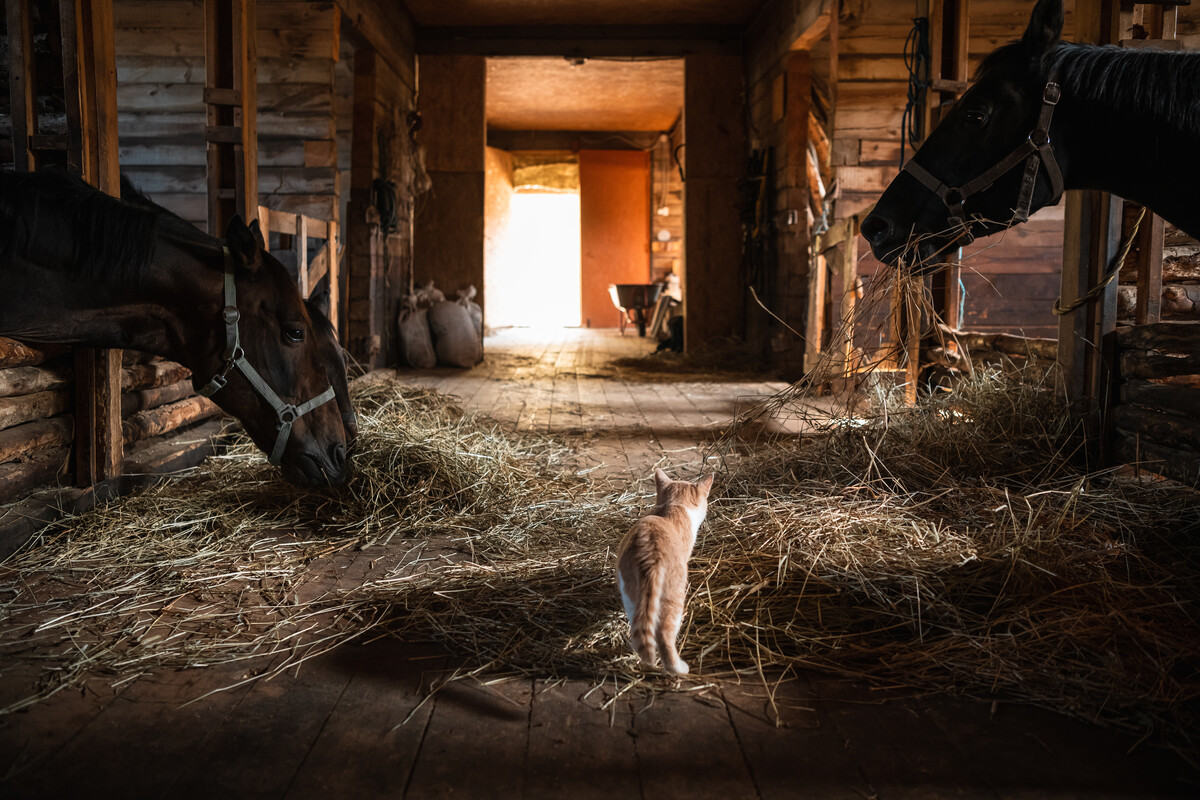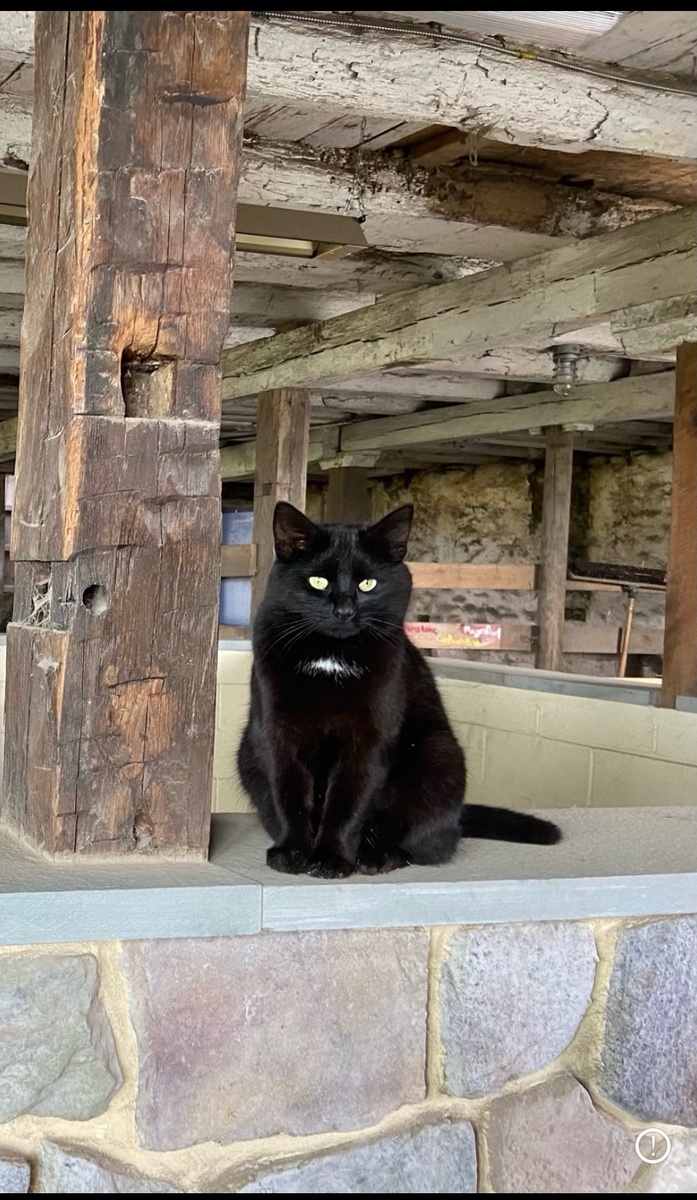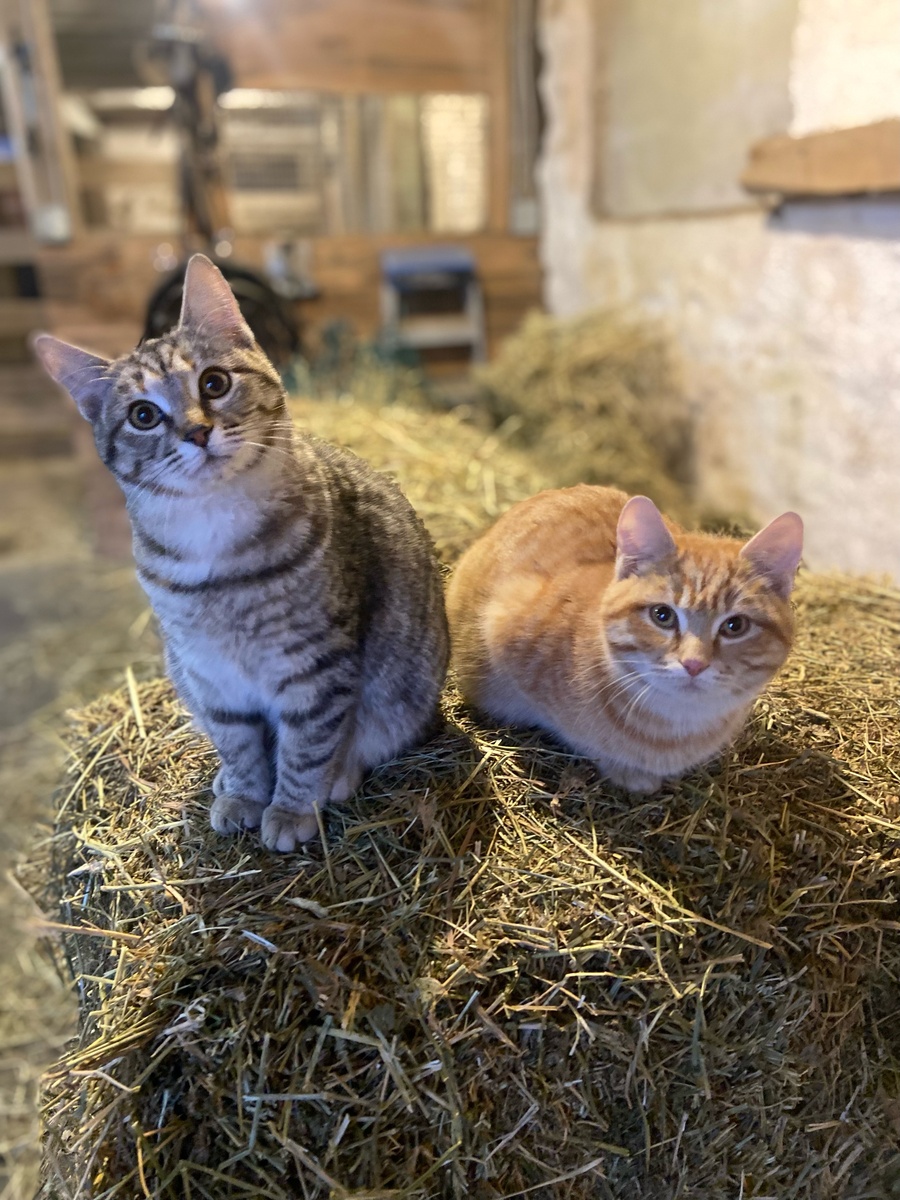
A Tribute to the Working Cat
We hear about working dogs all the time, seeing eye dogs, search and rescue dogs, airport baggage sniffers, and police dogs. The ubiquity of man’s best friend steadfastly toiling alongside his human partner is all around us. When asked to think of ways in which our feline friends partake in such professional pursuits, the question is often met with befuddlement. What do you mean by a “working” cat? Is there such a thing? The answer is, of course! And nowhere do we see a better example of working cats than the humble barn cat.
Cats have been working for a long, long time. Thousands of years ago ancient Egyptian, Turkish, and Iranian farmers were probably the first to recognize the rodent-exterminating prowess of our modern-day kitty ancestors. Ancient cats were invaluable at keeping rodents away from valuable stores of grain and perishable foodstuffs. Later, cats were welcomed as valuable shipmates on sailing vessels (to keep rodent populations low), and soon these seafaring felines were introduced to far-off lands.
We are fortunate to live in an area that is situated near some of the most productive farmland in the United States. Many of our LVC clients own farms and, along with that, several barn cats as well. Barn cats, considering the fact that they are expected to live outdoors, will have different medical requirements than indoor kitties. Barn cats, in general, fall into two distinct categories; those that are considered semi-feral/feral and those that are as tame and beloved as any housecat.
The Feral Working Cat
Feral barn cats are those that cannot be touched and are wary of humans. These cats, however, can be vital in keeping the number of mice on the farm as low as possible (without resorting to using poison to exterminate rodents). In fact, a good mouser may consume 5 or 6 mice a day! Can cats also be used for rat control? The reality is they do not seem to be as interested in hunting rats, likely because of the size many rats grow to, they are primarily interested in mousing. Why do we care about rodent control at all? The answer is simple: in a farm situation, grain contaminated by mouse droppings as well as the fleas, viruses, and parasites transmitted by wild rodents on the farm are often dangerous to human health.
Managing a feral barn cat population is somewhat more difficult than the “pet” barn cat. Many farm owners seek the help and advice of local humane/rescue organizations who provide a trap, sterilize, and release service for feral cat colonies. In such a program, feral cats are caught, undergo a spay or neuter procedure, and are vaccinated for rabies. Sometimes (depending upon the financial state of the rescue), these cats are also tested for communicable diseases such as feline leukemia. Afterwards, a small “notch” is made on an ear tip to indicate they were spayed or neutered and the trapped cats are released.

Any sick or injured animals are treated and individual homes are found for these cats if they become “tame” after continued interaction with foster caretakers. In an ideal world, feral cats would be captured at least yearly to booster vaccines and check for injury or illness. In reality, this is impractical and not likely to happen. Such contact may even be considered a cause of significant stress for a feral animal to endure. At a minimum, attempt to provide your feral cat with warm places to shelter and a supplemental food and water source.
Keeping Your Barn Cat Happy and Healthy
Many farm owners, including several staff members of LVC, have a huge place in their hearts reserved for their barn cats and want to keep them safe and healthy. This is a serious endeavor as barn cats are most definitely exposed to a variety of potential hazards their indoor counterparts will never experience. Those include but are not limited to:
Exposure to parasites, fleas, and ticks:
A good mouser is much more likely to be exposed to roundworms and toxoplasmosis as mice carry both parasites. Fleas can cause Bartonellosis, carry tapeworms, and contribute to skin allergies. A severe infestation may even result in blood loss and anemia. Exposure to mosquitoes puts your cat at risk for heartworm disease. Cytauxzoonosis, anaplasmosis, tularemia, and ehrlichiosis are severe, life-threatening diseases that could be carried by ticks.
How to mitigate risk: Use of regular, high-quality flea, tick, and heartworm preventative (such as Revolution Plus) will help reduce the possibility your pet is exposed to the above parasites and diseases. Running fecal tests several times yearly (and deworming with monthly heartworm prevention or Profender) as well as watching your cat closely for early signs of tick-borne disease such as fever, lethargy, and decreased appetite are important.
Exposure to mouse bait or other poisons:
Despite using barn cats for pet management, severe rodent infestations may require the use of rodenticides to control an overwhelming problem. Severe bleeding abnormalities and neurologic dysfunction may result if your pet is exposed to these poisons. Potential for exposure to toxic substances such as antifreeze, lime, pesticides, and petroleum products exists on farms as well.
How to mitigate risk: Use an extermination service that knows pets are on the premises. They will help use the minimum amount of rodenticide necessary, use types of rodenticides that present the smallest risk to cats, and offer boxes and bait stations that are difficult for pets to access. Keep any and all hazardous chemicals locked away or sealed in airtight bins. Clean up chemical spills immediately.
Exposure to viruses:
Barn cats are often extremely territorial, fighting with other cats to protect the boundary of their home occurs frequently. This puts your cat at risk for exposure to feline leukemia and feline AIDs as well as increases their chance of developing painful, infected abscesses at the site of bite wounds. Sick cats wandering onto the farm can expose your cat to devastating viruses such as feline distemper or herpes. Wildlife such as bats, raccoons, and foxes often build homes and hunt on farms. These species serve as reservoirs for the rabies virus and a rabid wild animal may be reactive enough to fight with an inquisitive barn cat.

How to mitigate risk: We cannot stress enough the need to vaccinate your barn cat yearly for FeLV (leukemia virus) and Rabies. Every three years, vaccinate for FVRCP (herpes, calicivirus, and panleukemia aka feline distemper). It is very important kittens destined to become barn cats receive all their early booster vaccines as well.
Injury from motor vehicles, heavy equipment, or other animals:
Unfortunately, this may be the most difficult hazard to protect your cat from. Cats seem to take risks when near roadways, often misjudging the speed of oncoming vehicles with fatal consequences. Farmers using heavy farm implements to plant and harvest are focused on the task at hand and may not notice a cat in their path of travel. Stray dogs could attack and injure a cat for the sport of it.
How to mitigate risk: If possible, locking your barn cat in a secure building when you know heavy fieldwork is in process helps keep them from harm’s way. Keeping an eye out for stray dogs and contacting the local dog warden if you see them on your property will help minimize your pet’s interaction with dogs you do not know or trust.
Exposure to extremes of heat, cold, hunger, or thirst:
An indoor cat benefits from a climate-controlled life. Barn cats are not so lucky and may experience the “joy” of a blizzard or heat wave. Some barn cat owners may expect their cat to find their own meals and not realize their pet is not as good at mousing as they need to be to keep themselves healthy. Such owners may also fail to notice a water source has become contaminated or dried up.
How to mitigate risk: All barn cats should have access to a shady area in the summer, preferably with good airflow, such as a barn aisle or shade tree. Some barn owners place a cat door in heated or cooled storage rooms such as tack rooms or rooms where feed is stored. Such rooms allow ample respite from heat and cold. Access to insulated “cat houses” made from old styrofoam coolers or warm hay storage facilities can keep your pet cozy and warm in the winter months. Older barn cats may not have the teeth needed to hunt well, or younger cats may just not be good at it. Providing access to supplemental cat food can help provide your barn cat with the extra energy they need to stalk and hunt prey. All cats should have supplemental water sources that are low to the ground. Expecting them to use water troughs and buckets designed for large animals is inadequate.
Keeping barn cats is full of rewards for both cat and pet owners. Barn cats can engage in instinctive behaviors that keep them mentally stimulated and physically fit. The farm owner can reap the benefit of reduced farm pests while simultaneously enjoying the companionship of a friendly feline. Cats can thrive outdoors if their medical and nutritional needs are met and you do your best to help manage the extra hazards they may face outside of the home. At Longwood Veterinary Center, we are here to help you keep your outdoor cats as safe and healthy as they can possibly be.
Written by: Corrina Snook Parsons VMD
